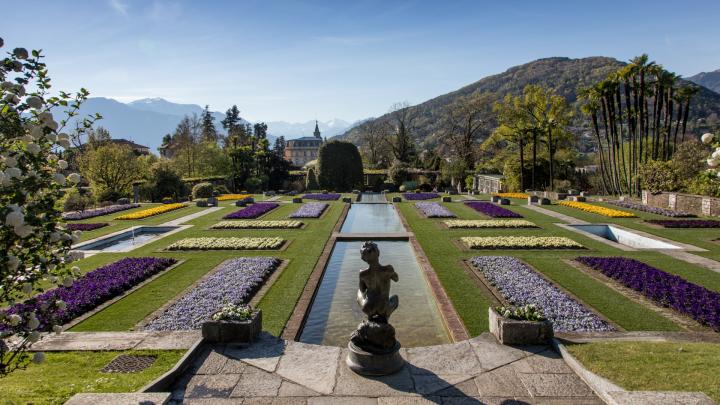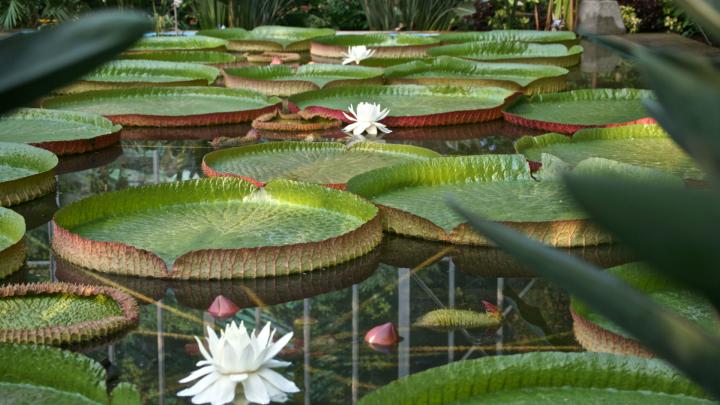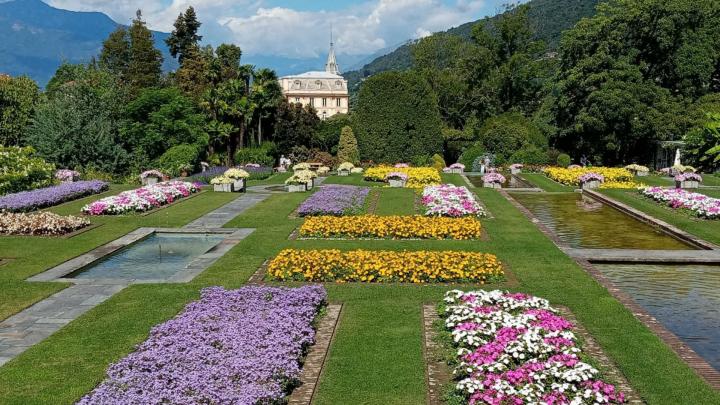With the arrival of the spring, the marvellous Giardini Botanici (Botanical Gardens) of Villa Taranto reopen their gates to the public with an explosion of flowers, colours and fragrances, a vast number of plant varieties and rare botanical species from all over the world. Entering this immense picturesque park is like journeying through distant countries.
There are two entrances, one from the landing stage and one from the road that connects Pallanza with Intra. Located here around the car park are the ticket office, kiosks for the sale of illustrative material and ornamental plants. Moving on, the botanical heritage found is vast and includes a park of 16 hectares with 20,000 plants of particular botanical importance and more than 15,000 border plants covering the flowerbeds.
It is a real work of art, born of the passion of Captain Neil McEacharn who bought it in the remote year of 1931, giving thousands of visitors the experience of incomparably beautiful scenes. The gardens are overlooked by the villa, which is now the home of the Prefecture of Verbano Cusio Ossola, built in 1853 by Augusto Guidini, an architect from the Ticino canton. Something that can be visited instead is the magnificent former gatehouse building of eclectic taste where the herbarium is located containing beautiful delicate “natural pictures”.
Not to be missed is the ‘Fontana dei Putti’ (Cherub Fountain) which in springtime is surrounded by multicoloured summer blossoms and enveloped in the gigantic leaves of the Colocasia antiquorum, also known by the picturesque name of “elephant ear”. From 8 to 29 April, during “Tulip Festival”, visitors can admire more than 80,000 blossoming bulbs of which the unquestioned star of the show is the tulip. From summer to autumn, the Labyrinth of the Dahlias allures and charms the visitors with 350 varieties and the spectacle of more than 1700 plants in blossom. In the greenhouses, among the tropical and subtropical plants, the “queen” of the aquatic plants, the enormous equatorial water lily whose leaves reach a diameter of two metres, can be viewed by the public from 20 June to late October.





